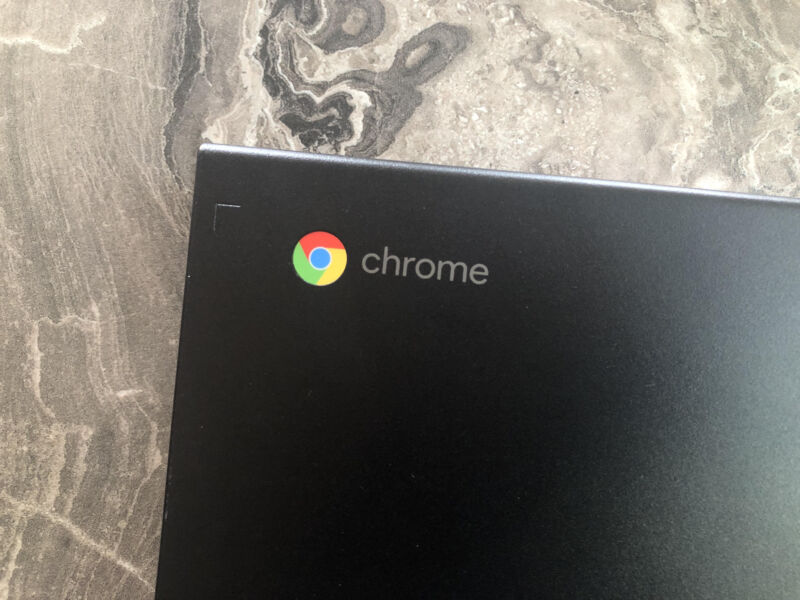
Google is in the US Public Interest Research Group (PIRG) hot seat. This week, the nonprofit published its "Chromebook Churn" [PDF] report, pointing a finger at Google for enabling Chromebooks that “aren’t designed to last.” It highlighted Chromebook quirks, like seemingly pointless hardware tweaks across models that challenge parts-sourcing and automatic update expiration (AUE) dates, as examples of the repair-averse Chromebook culture Google has enabled. For target Chromebook markets, like schools, that opt for Chromebooks to save money, long-term costs may outweigh the immediate savings, PIRG’s analysis concluded.
The report focuses on Chromebooks in schools and is based on an interviews with 10 "school IT directors, technicians, journalists, repair shop owners, parts suppliers, and teachers," as well as a "five-question survey with 13 school IT administrators and technicians." The sample size could be much larger, but the details in the report are also based on undisputed characteristics of ChromeOS devices. And while PIRG's paper emphasizes the impact this all has for schools, especially the influx of Chromebooks purchased for schools during the COVID-19 pandemic's height and beyond, it's worth considering for any current or prospective Chromebook owners or people who like to vote with their dollar.
Sneaky design changes hinder repairs
The report, written by PIRG's Designed to Last Campaign director, Lucas Rockett Gutterman, argues that because Chromebooks are largely web-based and don't vary in power as much as other laptops, it should be "easy" to offer modular designs that allow for parts to be shared across Chromebook models. Indeed, Framework's modular Chromebook proves this is possible. But in its "Failing the Fix" [PDF] report from February, PIRG reported that Chromebooks have an average French repairability index score of 5.8 out of 10, compared to 6.9 for all non-Chromebook laptops.
PIRG's "Chromebook Churn" paper details hurdles IT managers and others in education encounter when facing Chromebook repairs. For example, PIRG looked at bezel availability for six Chromebook vendors via "popular parts reseller" eduPARTS. Finding replacement bezels is more complicated than it should be:
All six of the manufacturers we surveyed made non-functional changes to the bezels of their Chromebook 11 sequentially released models that made these parts incompatible from one model to the next. For example, from the Samsung Chromebook 11 XE500C12 to XE500C13 the cutout in the bezel for the camera changed from a square to a circle. This cosmetic change rendered replacement parts incompatible across models. From the Dell 11 3100 to the Dell 11 3110 the bezel is not compatible across models, the only visible changes to the user between them being the addition of small notches on the bottom of the newer model. On the back of the bezels the 3110 version has missing or less pronounced clips, which renders them incompatible.
Even if these changes have any benefits, like reducing overall laptop size or weight or enabling an improved fit somehow, it's clear there are repairability drawbacks, which have financial and environmental implications.

Chromebook makers can take liberties with their specific SKU designs, but every Chromebook is based on a Google reference design. Final laptop designs are a collaboration, meaning there's likely blame to go around.
PIRG did praise Google's standardization of Chromebook chargers, but when it comes to the "typical repair, you need to replace 50 percent of the device and chuck it," Jeannie Crowley, director of technology and innovation for the Scarsdale, New York Public School District, said in the report. Examples, cited by additional people PIRG interviewed, include having to replace an entire Chromebook keyboard because a single key doesn't work.
“We have piles, hundreds of Chromebooks, and it's so frustrating because I can't just take a key off one,” Crowley says in the report.
Some newer Chromebook models, like Acer's Chromebook Vero 712, market keyboards that are supposed to be spill-resistant while using drainage systems and mechanically anchored keys to resist breaking, but there are various reasons a single key could break.
reader comments
165